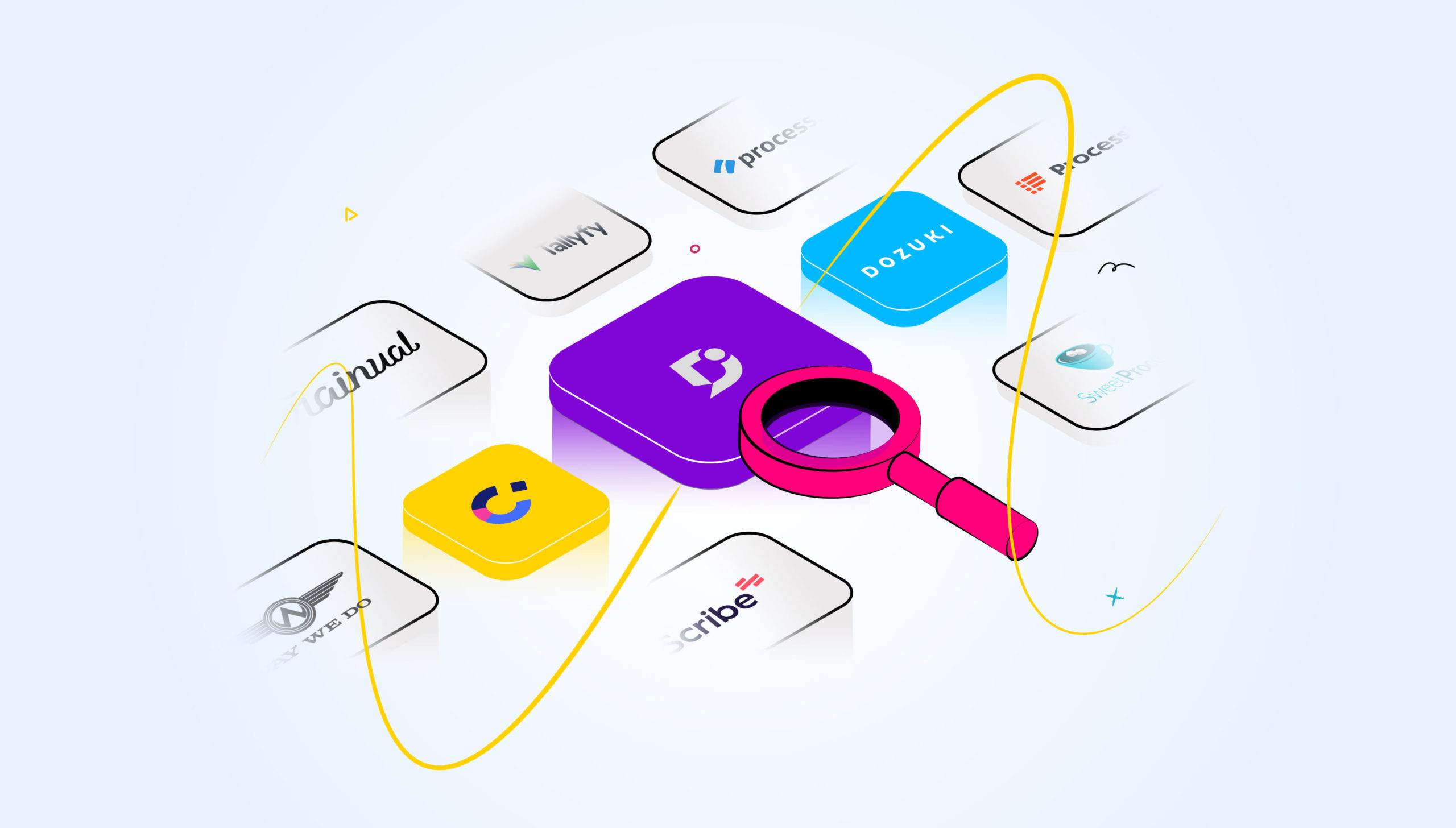In today’s fast-paced business world, efficiency and organization are essential for success. Whether you’re a small startup or a large corporation, having systems in place that streamline operations is key. This is where both knowledge base software and standard operating procedure (SOP) software come into play.
While these two tools serve distinct functions, they share a common goal: simplifying and enhancing how work gets done. One of the most powerful ways these tools overlap is by helping to streamline processes like providing performance review examples or documenting internal procedures.
What Is Knowledge Base Software?
At its core, knowledge base software is a centralized repository where all the critical information about your organization, products, services, and operations is stored and organized. It’s like a digital library that employees can access at any time to find answers to questions, learn about workflows, and reference key company documents.
A knowledge base can contain everything from technical documentation, company policies, FAQs, and troubleshooting guides, to onboarding materials and performance review examples. By making this information easily accessible, knowledge base software boosts productivity and minimizes downtime, allowing employees to focus on their tasks rather than searching for answers.
How Standard Operating Procedure Software Fits In
On the other hand, standard operating procedure software is designed to create, manage, and enforce uniform procedures across your organization. SOPs are essential for ensuring consistency and compliance across tasks, whether it’s in customer service, manufacturing, or HR. With SOP software, you can create detailed, step-by-step instructions for various processes that employees follow every day.
SOP software ensures that tasks are completed in the same way, every time, and helps prevent errors by standardizing workflows. This is particularly important when you need to streamline complex processes, like conducting performance reviews or managing customer service requests.
The Overlap Between Knowledge Base and SOP Software
While knowledge base software and SOP software serve different purposes, they are interconnected in how they improve business operations.
- Centralized Information Access: Both types of software centralize information—SOP software stores operational guidelines, while knowledge base software holds all the additional resources and reference materials your employees might need. Together, they provide a one-stop hub for everything related to your business processes.
- Streamlining Onboarding and Training: When you’re bringing new employees on board, both tools are invaluable. SOP software gives your team a clear understanding of what needs to be done, while knowledge base software offers detailed explanations, templates, and examples to support those procedures. For instance, if your team is learning how to handle performance reviews, a knowledge base can store templates, while SOP software outlines the exact steps to follow.
- Providing Performance Review Examples: One area where these two systems intersect is in streamlining HR processes, like performance review examples. Instead of creating new performance review forms or examples from scratch, a knowledge base can store examples from past evaluations, tips on how to write constructive feedback, and other best practices. SOP software, on the other hand, can ensure that the actual performance review process is standardized, making sure each manager follows the same steps for evaluating employees.
- Improving Process Consistency: With SOP software, you ensure that your team follows the exact steps every time, which enhances consistency. Knowledge base software supports this by providing your employees with access to up-to-date information, so they always know they’re working with the latest data or reference materials.
The Benefits of Combining Knowledge Base and SOP Software
- Increased Efficiency: With both systems in place, employees can quickly find the information they need, reducing time spent searching for documents or clarifying instructions. This leads to faster decision-making and improved overall productivity.
- Reduced Errors: By combining the structured guidance of SOP software with the flexible, comprehensive resources of a knowledge base, you significantly reduce the chance of mistakes. Everything your team needs is in one place, ensuring they follow the right procedures with the correct information.
- Scalability: As your business grows, these tools grow with you. New procedures can be added to your SOP software, and your knowledge base can expand with new materials. This scalability ensures that all employees, whether they’re brand new or seasoned, have access to the resources they need to do their jobs effectively.
- Improved Collaboration: Knowledge base software often allows for collaboration among employees, enabling them to share insights, ask questions, or contribute updates. When combined with SOP software, this can foster an environment of continuous improvement, where employees are not just following procedures but are actively involved in refining them.
- Better Customer and Employee Experiences: A well-organized knowledge base empowers employees to handle customer queries with more expertise, leading to better customer satisfaction. For employees, having easy access to SOPs and knowledge base materials ensures that they are well-trained, confident, and empowered to perform their roles efficiently.
Choosing the Right Tools for Your Business
When selecting knowledge base software or standard operating procedure software, it’s crucial to evaluate the needs of your organization. Some platforms combine both functionalities, offering a comprehensive solution that covers both knowledge management and process documentation. However, if you need specialized tools, choosing individual software solutions tailored to your needs may be the best option.
For example, tools like Guru or Confluence are great for creating a comprehensive knowledge base. These tools allow for easy document management, real-time collaboration, and integration with other systems. For SOP management, platforms like SweetProcess or Tallyfy are designed specifically to streamline workflows and process automation.
Conclusion
Both knowledge base software and standard operating procedure software serve unique roles in the business ecosystem, but they also complement each other in ways that can significantly improve your operations. By providing easy access to information and ensuring that processes are standardized and efficient, these tools help streamline workflows, reduce errors, and improve both employee and customer satisfaction.
In particular, when it comes to managing performance review examples or refining business processes, these tools work together to make sure your team has all the resources they need to succeed. By implementing both, you can ensure that your business operates smoothly and remains scalable for future growth.





























